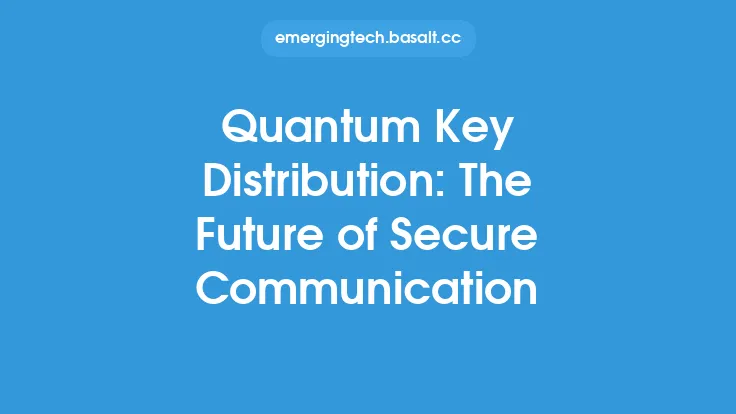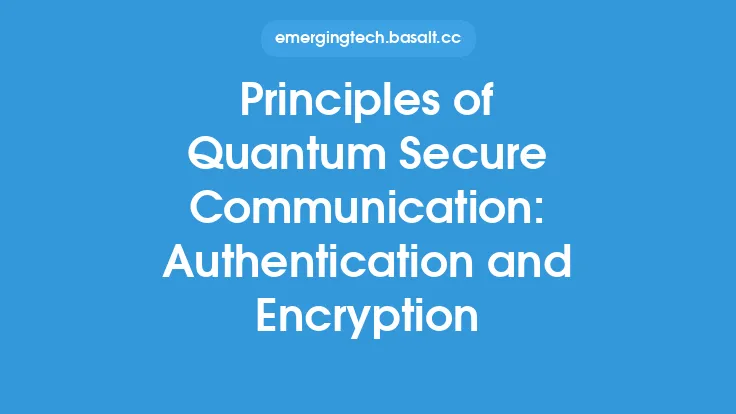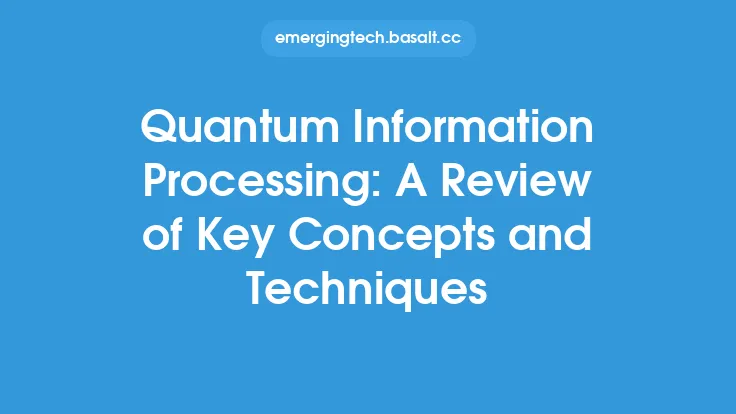The concept of secure communication has been a cornerstone of human interaction, from ancient messengers to modern-day digital transactions. With the advent of quantum computing, a new paradigm for secure communication has emerged, known as Quantum-Secure Direct Communication (QSDC). This revolutionary approach enables the secure transmission of information without the need for a shared secret key, leveraging the principles of quantum mechanics to guarantee the confidentiality and integrity of the communicated data.
Introduction to Quantum-Secure Direct Communication
QSDC is a quantum cryptographic technique that facilitates the direct communication of classical information between two parties, traditionally referred to as Alice and Bob. This method exploits the unique properties of quantum systems, such as superposition, entanglement, and measurement, to encode and decode the information. The security of QSDC is based on the no-cloning theorem, which states that an arbitrary quantum state cannot be perfectly copied. Any attempt to eavesdrop on the communication would introduce errors, making it detectable by the legitimate parties.
Theoretical Foundations of QSDC
The theoretical foundations of QSDC are rooted in quantum information theory and quantum mechanics. The protocol typically involves the following steps: (1) preparation of quantum states, (2) encoding of classical information onto the quantum states, (3) transmission of the quantum states, (4) measurement of the received quantum states, and (5) decoding of the classical information. The security of QSDC is ensured by the principles of quantum mechanics, which dictate that any measurement of a quantum state will inevitably disturb it. This disturbance can be detected by the legitimate parties, allowing them to verify the authenticity of the communication.
Quantum Entanglement-Based QSDC
One of the most promising approaches to QSDC is based on quantum entanglement. Entanglement is a phenomenon in which two or more quantum systems become correlated in such a way that the state of one system cannot be described independently of the others. In entanglement-based QSDC, Alice and Bob share an entangled pair of particles, which are then used to encode and decode the classical information. The entanglement is used as a resource to enable the secure communication, and any attempt to eavesdrop would destroy the entanglement, making it detectable.
Practical Implementations of QSDC
While QSDC is still an emerging field, several practical implementations have been demonstrated in recent years. These implementations can be broadly categorized into two types: (1) optical implementations, which use photons as the quantum information carriers, and (2) solid-state implementations, which use quantum dots or other solid-state systems as the quantum information carriers. Optical implementations have been shown to be particularly promising, with demonstrations of QSDC over distances of up to several kilometers.
Security Analysis of QSDC
The security of QSDC is based on the principles of quantum mechanics, which provide a fundamental limit on the amount of information that can be extracted from a quantum system. Any attempt to eavesdrop on the communication would introduce errors, which can be detected by the legitimate parties. The security of QSDC can be analyzed using various techniques, including quantum error correction and quantum key distribution. These techniques can be used to estimate the amount of information that has been leaked to an eavesdropper and to determine the security of the communication.
Challenges and Future Directions
While QSDC has shown tremendous promise, several challenges need to be addressed before it can be widely adopted. One of the main challenges is the difficulty of scaling up the distance over which QSDC can be performed. Currently, most demonstrations of QSDC have been limited to distances of up to several kilometers, and it is unclear whether it will be possible to extend this distance to longer ranges. Another challenge is the need for highly efficient detectors and sources of quantum states, which are currently not available. Finally, the development of practical and efficient protocols for QSDC is an active area of research, and it is likely that new protocols and techniques will be developed in the coming years.
Conclusion
Quantum-Secure Direct Communication is a revolutionary approach to secure communication that leverages the principles of quantum mechanics to guarantee the confidentiality and integrity of the communicated data. While QSDC is still an emerging field, it has shown tremendous promise, with several practical implementations demonstrated in recent years. The security of QSDC is based on the principles of quantum mechanics, which provide a fundamental limit on the amount of information that can be extracted from a quantum system. As research in this field continues to advance, it is likely that QSDC will play an increasingly important role in the development of secure communication systems.





